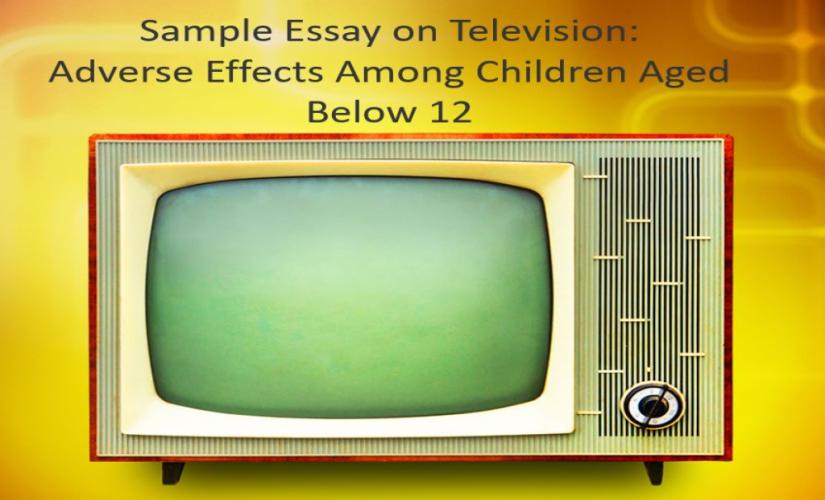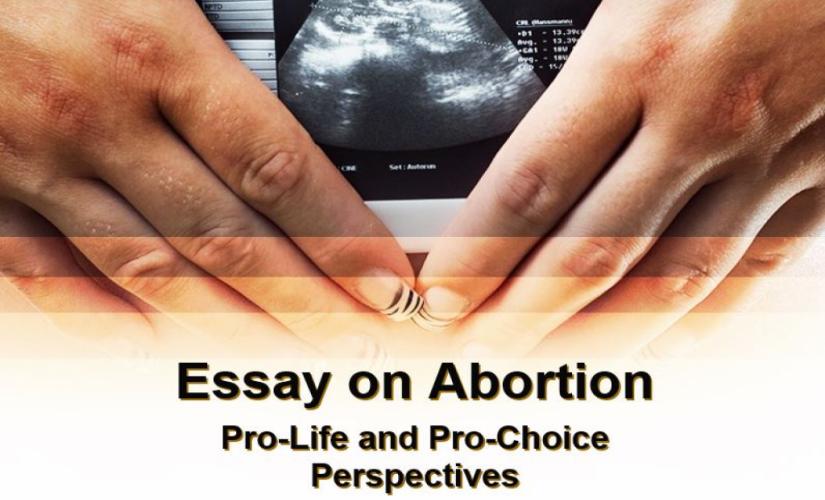Scholars have documented the adverse effects of exposure to television among children. Basically, the findings of various studies on the viewing of television are associated with increased emotional and behavioral problems among children. On the other hand, TV programs are a useful tool to develop learning and cognitive skills. Furthermore, television can be used to improve the state of children’s development of receptive and productive linguistic skills. In this essay on television, the current state of TV programs creates a negative influence on the education of children, creating a distorted vision of the world, despite the fact that the proper use of television as a tool to develop the learning, cognitive, receptive, and productive linguistic skills has benefits for young persons in their socialization and its settings.
Background Information on Adverse Effects of Television Exposure Among Children Aged Below 12
In the 1990s, research data demonstrated that, on average, each child watched three hours of TV each day. For instance, children in the U.S. have spent about 15,000 hours watching TV by the time they graduate from school, compared with 12,000 hours in the classroom (Bar-on 289). Basically, these figures demonstrating high levels of exposure to television among children have remained constant over the years. By considering an essay on television, they prove that children are likely to have spent about three years watching TV programs by the time they graduate from high school. As people without effectively developed cognitive, mental, and psychological capacities to evaluate and process these experiences and their meanings and contexts, children are especially vulnerable to the communications or messages that they view on television.

The State of Perceptions and Behaviors of Children
Also, the perceptions and behaviors of children who view TV are subject to significant influence. Owing to their lack of effective cognitive and psychological capacities, children (especially those aged five and below) are unable to differentiate between the content that they view on TV, on the one hand, and the reality in life, on the other (Bar-on 289). While some studies have observed positive effects of TV viewing among children (in terms of social and educational benefits), most credible research has yielded observations that TV viewing among children promotes adverse health, cognitive, and behavioral effects. Hence, in this essay on television, these adverse effects relate largely to areas, such as sex and sexuality, substance use and abuse, nutrition and obesity, and violence and aggressive behavior.
Psychological Perspective in an Essay on Television
The adverse effects of TV viewing among children relate largely to the incapacities of children to process the content competently from a psychological perspective and distinguish the content from reality. Basically, some of the scenes and content that children view on TV are those of rape, the use of guns, murders, armed robberies, and assaults. These depictions of force have become increasingly prevalent in TV programs targeting children or in programs that children find appealing. In a survey of about 10,000 hours of TV programming, the National Television Violence Study found that over three-fifths (61%) of the programming contained violence, especially the use of guns (Bar-on 289). Portrayals of violence on TV usually involve the glamorization of such behavior, especially because the perpetrators of such violence do not receive punishment in the programs.
Hero Image
Also, the perpetrators of violence on these programs are often the heroes, in the end, enjoying the “success” of killing or causing the suffering of others (Bar-on 289). Therefore, children perceive the application of violence to others as a legitimate, practical, and permitted way of achieving objectives in society and becoming “heroes.”
Essay on Television Exposure and Aggressive Behavior
The evidence for these observations is available in the findings of numerous studies (including longitudinal studies) on relationships between the exposure of children to violence on TV and the development of their own violent and aggressive behaviors. In particular, the studies have identified the role of TV viewing in fostering violent behaviors among children. In a study involving meta-analytic and quasi-systematic reviews, violent imagery that younger children viewed on TV and other mediums (video, computer games, and film) had substantial effects (Browne and Hamilton-Giachritsis 705). These aspects influenced arousal, emotions, and thoughts that increased the likelihood of aggressive and fearful behavior among them, especially among boys.
Teenagers and Youths
Also, the study yielded observations of inconsistencies in this evidence when the research considered older children (teenagers and youths). For example, the evidence for adverse TV viewing effects on young children who have not reached teenage was consistent (Browne and Hamilton-Giachritsis 705). In turn, some of the studies in the meta-analysis yielded findings covered in this essay on television that the exposure of children to media violence predicted aggressive behavior, especially when the children identified with the characters or “heroes” that they viewed in the TV programs or perceived the aggression on TV from a realist perspective.
Violence on Television
The meta-analytical studies demonstrated that antisocial and aggressive behavior was heightened among children who watched violence on TV. In a meta-analysis of 217 studies, one researcher observed a highly significant overall association between the exposure of children aged 11 years and below to antisocial or aggressive behavior. For example, the study found the highest level of this association among children, especially boys, aged below 5 years and less but significant association among children aged between 6 and 11 years (Browne and Hamilton-Giachritsis 704). In another study, the researchers reviewed 28 different experiments that featured observations of spontaneous aggression during social interactions among children to assess the effects of TV viewing among them.
Aggressive Behavior and an Essay on Television
The combined findings demonstrated that children were substantially more aggressive after watching TV or film programs that depicted violence. In a review of the findings of research on the effects of TV, the UN organization UNESCO found that, while media violence affects everyone adversely, these effects are highly dependent on the cognitive appraisal and the social and physical environments of individuals (Browne and Hamilton-Giachritsis 70). In the context of the effects of TV violence on young children, the lack of strong cognitive and psychological capacities among children aged 12 and below promotes their vulnerability to the influence of depictions of violence on TV.
The Content of Television
In terms of the adverse effects of exposure to TV from the perspectives of sex and sexuality, both programming and advertising on American TV feature high levels of “sexualization.” This trend is evident in the high prevalence of sexual references, innuendoes, and jokes on TV content that American children view daily. The risk of exposure to these depictions and references on TV is serious, considering that the traditionally described “family hour” of TV viewing (between 8 pm and 9 pm) now contains an increasing number of incidents or depictions of a sexual nature (Bar-on 290). In essence, TV has become the primary but inappropriate source of information about sex for children. Hence, the tendency of TV content to portray sexual behavior and predation in a positive light promotes children’s perceptions, attitudes, values, and beliefs that such behavior is normal, promoting risky sexual behaviors among them.
Essay on Television and Promoting Unhealthy Dietary Behaviors
TV viewing influences the bodily health of children, adversely by promoting unhealthy dietary behaviors, including negative nutrition habits, sedentary lifestyles, and negative ideas about beauty. Researchers have observed patterns of increased dietary energy intake among children as they watch TV. For instance, television advertisements also tend to promote the purchase and consumption of high-energy foods, such as fast foods, snacks, and breakfast cereals (Bar-on 290). Television viewing also promotes overweight and obesity among children because the habit replaces physical exercise in their lives and daily routines. On the other hand, TV viewing could promote unhealthy conceptions among children about the ideal body weight or beauty. Most of the TV characters, especially female characters, are thin, raising the possibility of children conceiving thinness as the ideal concept of beauty. Also, a popular depiction of the use of tobacco and alcohol and the tendency to glamorize it may promote harmful perceptions.
The Development of Learning and Cognitive Skills by Using Television
On the other hand, TV programs can be used for the development of learning and cognitive skills during childhood. In particular, the current studies on the issue of the effect of television on children are concerned with the question of how much children watch (Kirkorian et al. 40). In this case, this essay on television cannot investigate the whole number of effects on the behavior of the children, and the question of what they watch is also important. For example, children below 12 years are active users of the media, and they take a lot of information from TV programs (Kirkorian et al. 40). Unfortunately, the current television shows content that cannot be understood by children below 12 years. In this case, it seems that TV programs have a negative influence on children because they cannot learn from them.
Benefits of Watching Television
However, since the children are active media users, then the impact of television is direct. If the child is watching the program and the young person can process its content, then it is a useful tool for teaching. This aspect of the issue can be explained by the fact that videos are one of the ways of learning about the cognitive development of children. Moreover, kids below 3 years are better at learning real examples, while children below 12 years begin to learn the world from TV programs (Kirkorian et al. 43). Hence, teachers can use television as a tool that provides clear content in learning.
The State of a Vocabulary of Children and an Essay on Television
Furthermore, television can be used to develop the state of the vocabulary of children. Basically, during the growing, the child begins to watch different situations and on words that are used in it. According to the study, every child from 8 years old spends about 7:38 hours per day, and it suggests the young person is watching how people use their words in necessary situations (Al-Harbi 1). In this case, the perception of words in childhood is an important step in the development of young persons because of receptive and productive linguistic skills, covering an essay on television. However, the day-to-day perception of words and their usage is a crucial aspect of language acquisition. It means that not only parents and the close environment of children but also media becomes a part of the life of young persons.
Low-Income Families and Television
In addition, well-structured, directed children’s TV programs have a significant influence on children from low-income families in the case of the competence to use words properly. Since almost all families have access to television, parents can use programs to teach their children how to expand their vocabulary (Al-Harbi 2). In the first stages, kids cannot understand words, but, according to the long-term perspective, their vocabulary will be expanded without any additional spending in terms of money from the side of parents. In this case, teachers can use TV programs as a tool to educate children from low-income families, considering language acquisition. As a result, since children begin to learn many words and their usage, then they can use the proper vocabulary in the necessary situations. In turn, this aspect of television is also a tool to establish the correct social settings for further adult life.
Conclusion of an Essay on Television
In conclusion, this essay on television argues that the lack of an effectively developed cognitive and psychological capacity among children under 12 years old is the fundamental reason for the diverse and significant adverse effects of TV viewing on their health and behaviors. It is important to consider that current studies that investigate the negative influence of television in the case of how children watch and its contents are not appropriate for young minds.
By considering the differentiation between media content or portrayals and reality, these children model their expectations, values, attitudes, and beliefs about the world on TV depictions. In this case, the commercial side of media has a negative influence on the path of the education of children. On the other hand, TV programs can create positive results in education, considering the case of the development of learning, cognitive, receptive, and productive linguistic skills. Unfortunately, people do not use television correctly, and the media has a negative influence on young minds. Thus, even if an essay on television covers its benefits, the current state of TV programs in the case of its content must be developed.
Works Cited
Al-Harbi, Salwa S. “The Influence of Media in Children’s Language Development.” Journal of Educational and Developmental Psychology, vol. 5, no. 1, 2015, pp. 1-5.
Bar-on, Miriam. “The Effects of Television on Child Health: Implications and Recommendation.” Archives of Disease in Childhood, vol. 83, 2000, pp. 289-292.
Browne, Kevin, and Hamilton-Giachritsis, Catherine. “The Influence of Violent Media on Children and Adolescents: A Public-health Approach.” The Lancet, vol. 365, 2005, pp. 702-710.
Kirkorian, Heather L., et al. “Media and Young Children’s Learning.” The Future of Children, vol. 18, no. 1, 2008, pp. 39–61.


